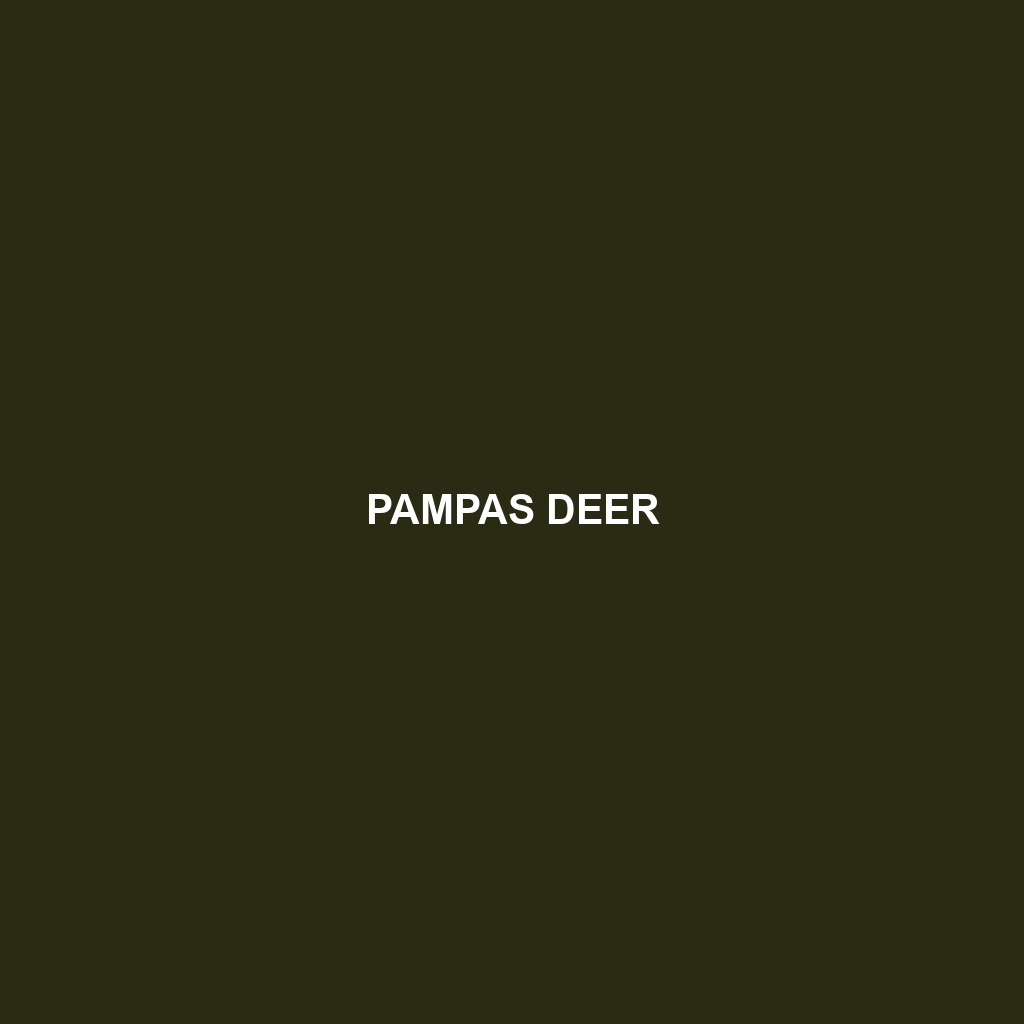Pampas Deer: A Comprehensive Overview
Common Name: Pampas Deer
Scientific Name: Ozotoceros bezoarticus
Habitat
The Pampas Deer primarily inhabits the grasslands and savannas of South America, predominantly found in regions like Argentina, Uruguay, and parts of Brazil. Preferring open fields and wetlands, these deer thrive in areas with abundant grasses and shrubs, which provide both food and shelter.
Physical Characteristics
Pampas Deer are medium-sized members of the Cervidae family, typically standing between 90 to 100 cm (35 to 39 inches) at the shoulder. They possess a light brown coat with a creamy white underside and distinctive facial markings. Males are notable for their antlers, which are typically branched and can grow up to 40 cm (15 inches) long. Their slender bodies and long legs make them agile and well-adapted to their environment.
Behavior
Pampas Deer are generally diurnal, meaning they are most active during the day, and exhibit social behaviors ranging from solitude to small group formations. They are known for their quick movements, allowing them to escape predators effectively. Communication between deer is often through vocalizations and scent marking, particularly during the breeding season.
Diet
The diet of Pampas Deer consists predominantly of grasses, herbs, and shrub foliage. They are herbivores with a preference for tender shoots and leaves, often grazing in the early morning or late evening to avoid the heat of the day. This grazing behavior plays a vital role in maintaining the grassland ecosystem, allowing for new plant growth.
Reproduction
Pampas Deer breed seasonally, typically during the spring, with a gestation period of around 7 months. Females usually give birth to a single fawn, which they conceal in tall grass to protect it from predators. After a few weeks, the fawn begins to accompany its mother, learning to forage for food.
Conservation Status
Currently classified as Vulnerable on the IUCN Red List, Pampas Deer populations are threatened by habitat loss due to agricultural expansion and urban development. Conservation efforts are in place to protect their habitats and ensure the survival of this unique species.
Interesting Facts
Interestingly, Pampas Deer are known for their unique adaptability to changing environments. They can alter their feeding habits based on seasonal availability of food sources. Furthermore, they have a remarkable ability to jump over tall grasses and shrubs, which aids in their escape from predators.
Role in Ecosystem
Pampas Deer play a crucial role in their ecosystem by influencing plant community dynamics through their grazing habits. By consuming a variety of plants, they help maintain the balance within grasslands, promoting biodiversity and aiding in seed dispersal for various plant species.
